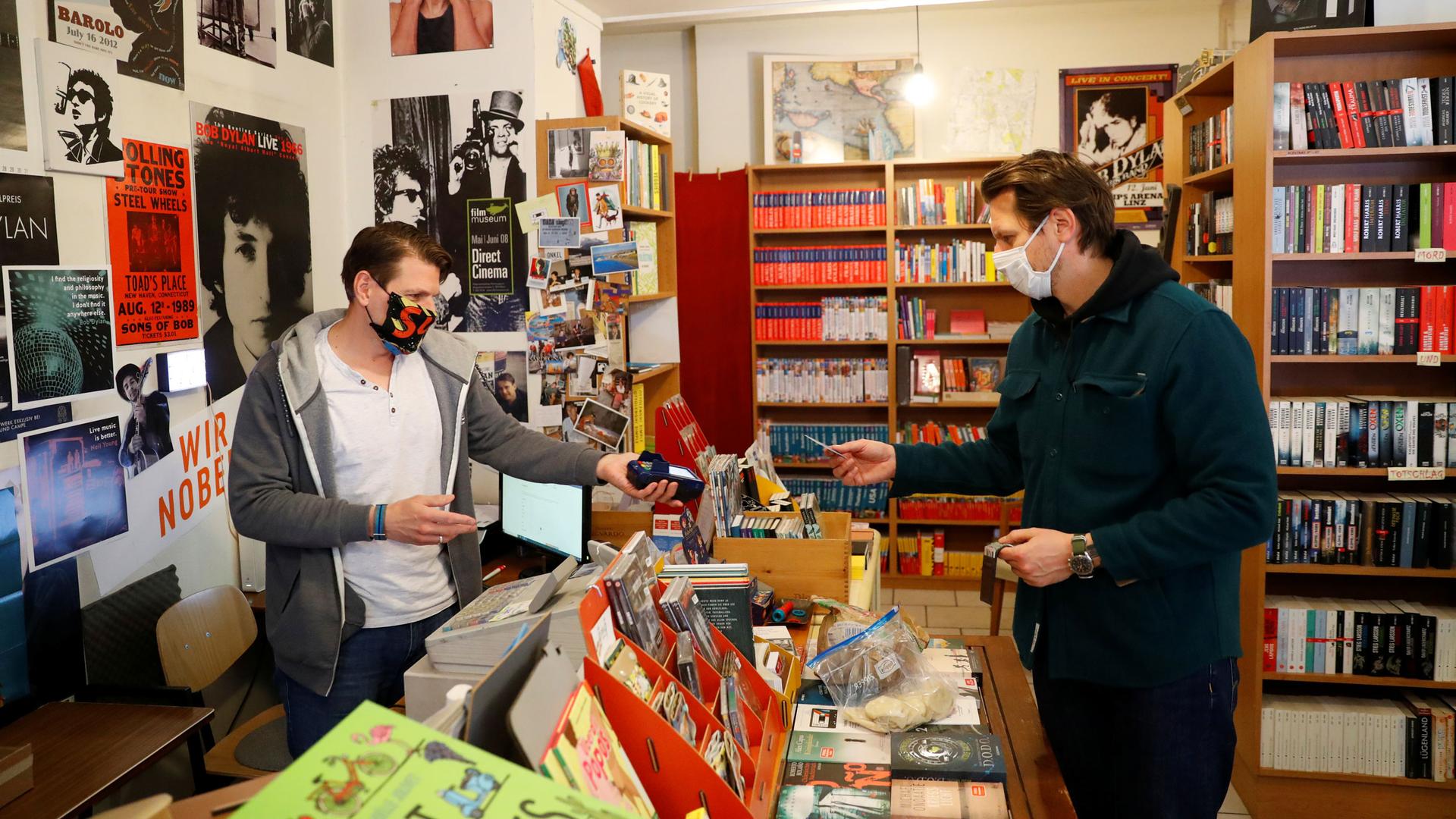‘No fast track’ to normal when it comes to reopening economies
A customer pays in the book store “Buchhandlung Lerchenfeld” after the Austrian government loosened its lockdown restrictions during the coronavirus disease (COVID-19) outbreak in Vienna, Austria, April 14, 2020.
Strict physical distancing measures in response to the novel coronavirus have disrupted economies and lives in massive ways. But as shutdown measures stretch into weeks and months, many communities across the globe are now wrestling with when and how to relax those policies.
The United Kingdom has announced it would continue its lockdown for at least three more weeks. Meanwhile, on Thursday evening, US President Donald Trump is slated to lay out his plan and guidelines for when places in the US can get back to work. Though Trump falsely claimed he had “absolute authority” as president to make that call, the power to reopen is largely vested in the states.
There’s no simple transition for countries looking to ease restrictions, said Dr. Hans Henri Kluge, director of the World Health Organization’s regional office in Europe, during a press briefing Thursday.
“Ultimately, the behavior of each of us will determine the behavior of the virus. This will take perseverance and patience. There is no fast track back to normal.”
“Ultimately, the behavior of each of us will determine the behavior of the virus,” he said. “This will take perseverance and patience. There is no fast track back to normal.”
Health researchers such as Caroline Buckee, associate director of the Center for Communicable Disease Dynamics at the Harvard T.H. Chan School of Public Health, are wrestling with how to understand the best way to ease restrictions to limit the future spread of COVID-19 and prevent even more harm down the road. For her, critical pieces of this puzzle are still missing.
“In many areas we don’t really know where we are with the epidemic because of the lack of testing,” Buckee told The World during a Facebook Live discussion co-produced with the Forum at Harvard’s Chan School. “So I’d say it’s very variable, geographically, and in terms of timing.”
Related: COVID-19: The latest from The World
Understanding this variability is important, Buckee said, because the pandemic is playing out differently across the globe, depending on where you live and how well those health systems are able to care for patients who are sick with COVID-19.
More than 2 million cases of the disease have been documented. Some parts of the world are just at the beginning of their outbreak, while places like China and Singapore are on the other side of their major peak. The situation is even more unclear in communities that lack necessary testing.
Buckee said in the United States, another important aspect of the pandemic that needs to be understood is how many people have already been infected, and how people who are asymptomatic spread the virus.
To know whether someone has had the new coronavirus requires a specific kind of antibody test that has yet to be fully rolled out in the US. It is also unclear if and how long a person who has had COVID-19 is immune to the disease in the future.
“It gives a clearer picture of how far along a community is in the epidemic, when it’s sensible to restart economies and go back to work,” Buckee said.
Robust contact tracing is also key in preventing future spikes, as communities seek to scale back social distancing. Transition policies, said Buckee, must also take into account how to limit coronavirus exposure to those who may be most likely to experience complications, such as the elderly and those with chronic health conditions.
